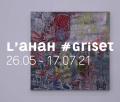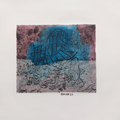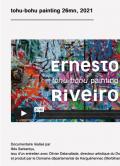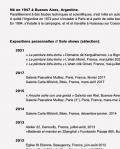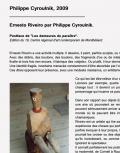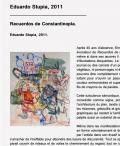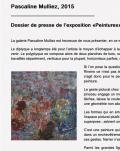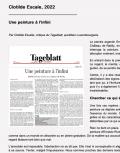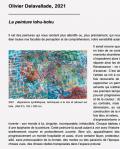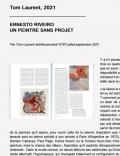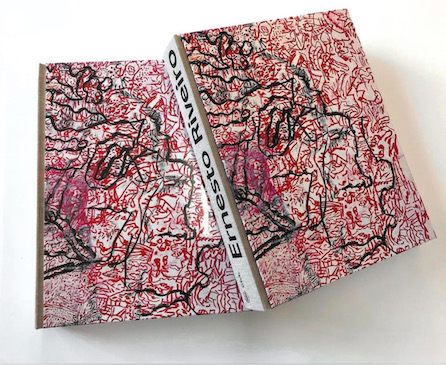Pascaline Mulliez, 2020
____________________________
Born in 1947 in Buenos Aires, Ernesto Riveiro has been living and working in France since 1972. This monograph offers a vast panorama of his work from 1987 to the present. Why 1987? During the editorial process, it became evident that this year bears witness to profound changes closely related to the emergence of certain artistic practices.
After twenty years of painting, Ernesto Riveiro has come to face a number of existential issues. He reflects on his involvement in painting, his being in painting, questions painting and its history, its uses. And so, in 1987, the artist problematizes and experiments within his own practice: he gradually invents, contingently, a renewed conception of the diptych.
The “scribbling” of a gesture voluntarily “clumsy” will emerge. The small step to the side that evolves and becomes the work itself.
Three art historians have contributed essays for this publication. Céline Delavaux, Ph.D Literature (whose thesis focused on the writings of the artist Jean Dubuffet); Philippe Cyroulnik, art historian and exhibition curator; and Mercedes Casanegra, also art historian and exhibition curator.
Céline Delavaux’s text focuses on the notion of art, on “what art does to thought”. Philippe Cyroulnik transcribes long interviews he undertook with the painter during which he questions the different modalities and evolutions of Riveiro’s work and, finally, Mercedes Casanegra retraces the artist’s life in detail and contributes a substantial essay on his work.
Through its small publishing house, the L’ahah association intends to publish monographs of established artists whose work is not often shown today.

